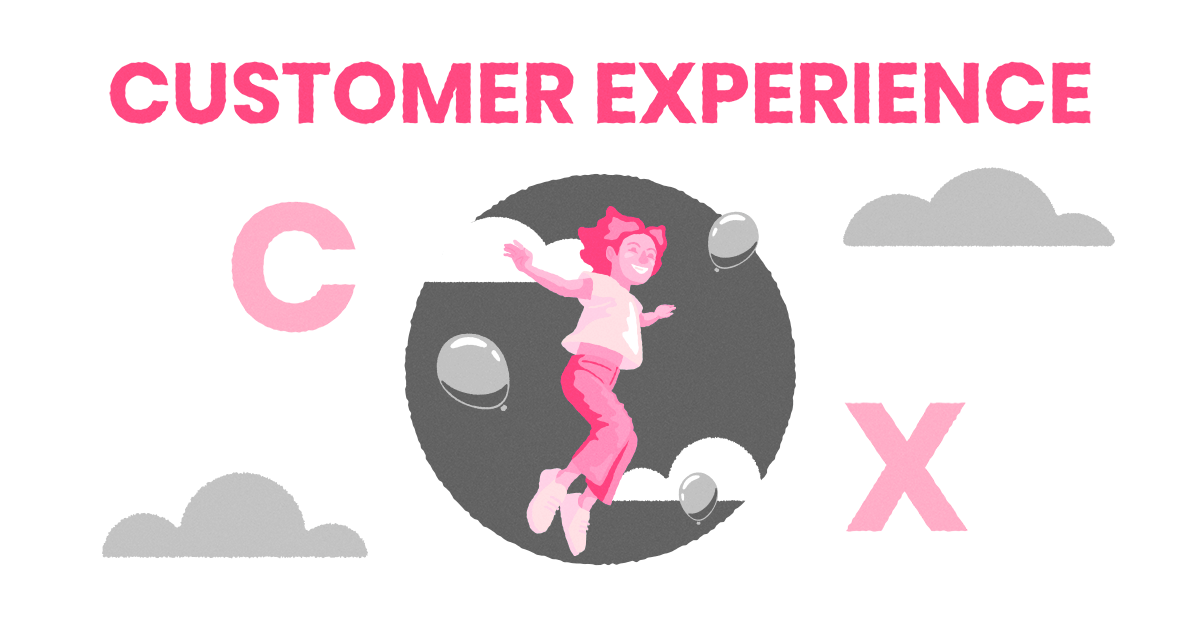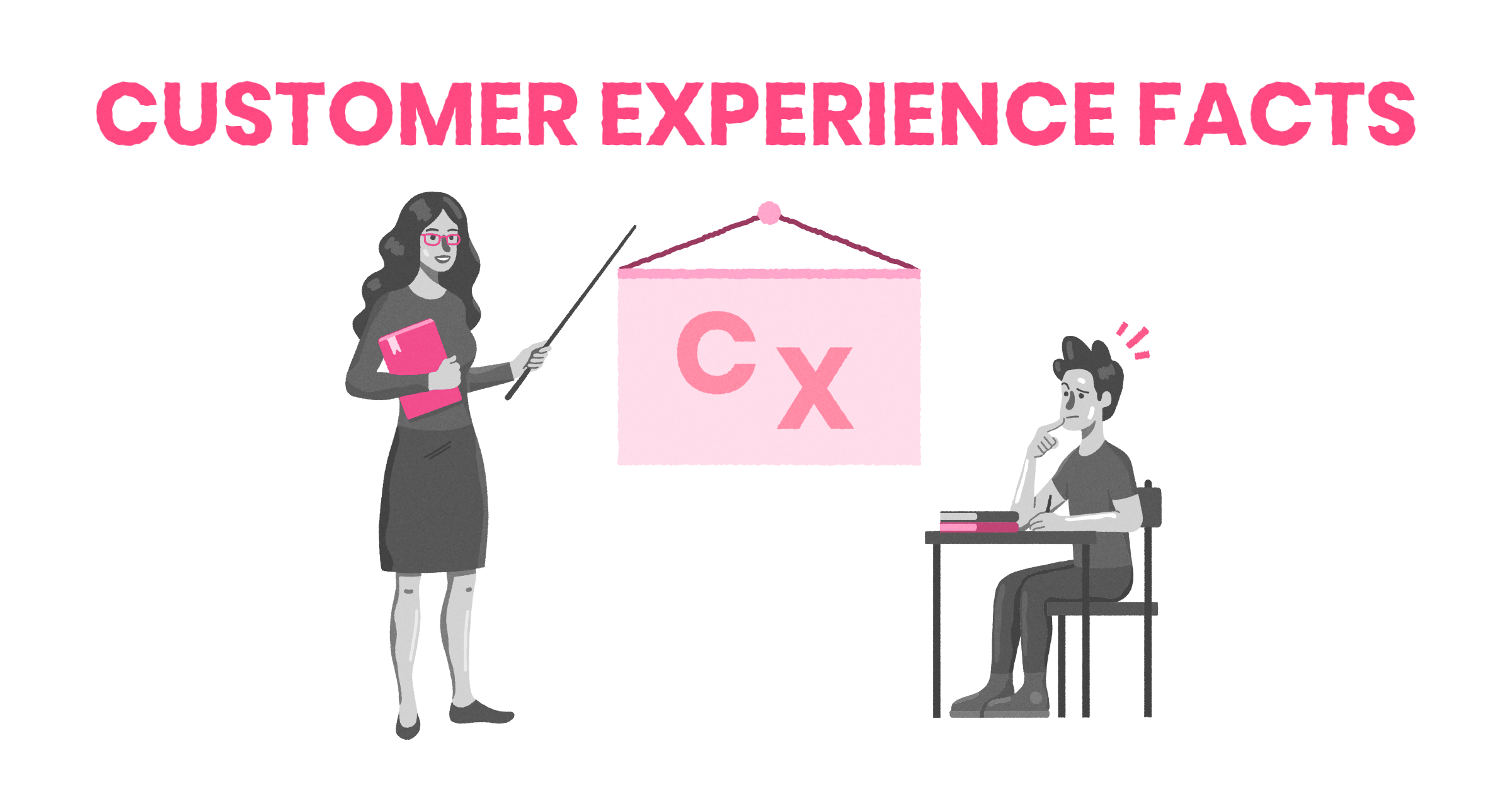How to use customer feedback to improve customer experience?
According to 54% of marketers interviewed in 2021 by Mapp, the biggest challenge to a successful customer experience strategy will be the lack of customer insights.
But before claiming that all you have to do to improve your customer experience is collecting your customer feedback (using SatisMeter new survey designer, of course) and leverage them, maybe we can start by trying to understand what is precisely customer experience.
Create your SatisMeter account now
What is Customer Experience (CX)?
From an outside point of view, Customer eXperience (often abridged in CX) could easily be just seen as another trendy word. This article will explain why this misconception could lead your company to a dangerous path for your business health.
Customer experience, user experience, and customer journey
A story of confusion and misconception
Simply put into words, Customer Experience is the sum of all the experiences earned by your customers with your business.
Whether it will be a direct (speaking with your support team) or indirect interaction (getting a word-of-mouth referral) with your brand, everything you do and everything you have done impact your customers and their decision to keep coming back – or not.
For this reason, customer experience shouldn’t be confused (as it is often) with the User Experience. Although it sounds very similar and concerns your brand’s interactions, UX will be defined as a specific part within CX related to the usability of your website.
The importance of customer experience
Did you know that a delighted customer will contribute on average 2.6 more to your revenue than a “just” satisfied customer? Add that to the fact that retention of existing customers will cost you seven times less than acquiring new ones, and you will understand why CX is so crucial for your business.
Think about it that way: a happy customer is a perfect advocate for your brand. By embracing a customer-centric approach, you will create a better experience for your existing users, who will be willing to share their good thoughts about a brand they like and influence others. 88% of potential new consumers read and trust online reviews to determine their purchase, making customer feedback a priceless tool for your business.
But closing this loop won’t be such an easy task, and you better start by understanding your customer journey profoundly. The customer journey starts as early as contacting a potential lead through an email that you found.
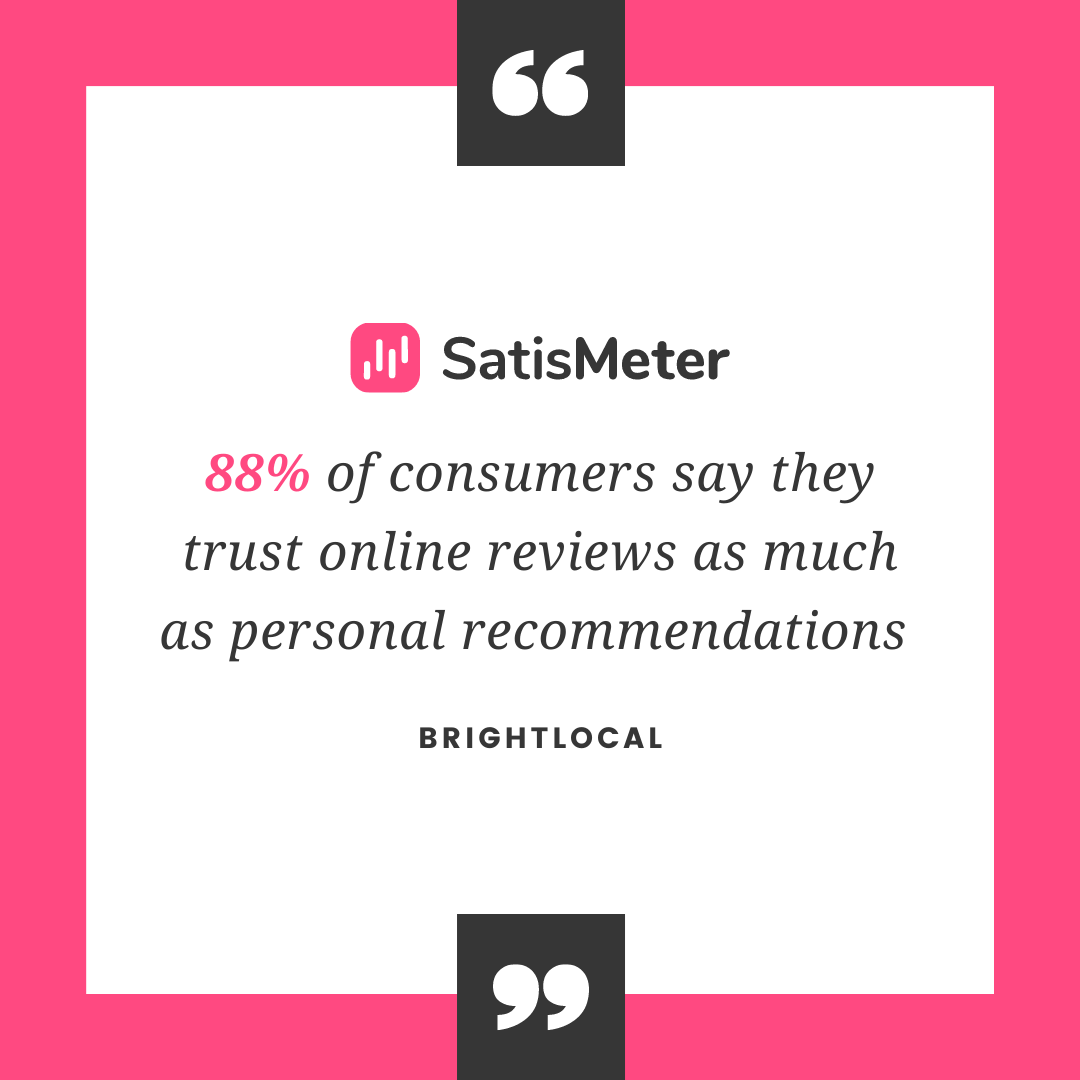
Understanding your customer journey
Another common mistake would confuse the customer experience with the customer journey, as these two notions are very closely related. But while customer experience is the global result of all the interactions your client has with you, the customer journey is the specific and detailed progression of users across touchpoints, including critical obstacles they could encounter on their way.
Finding your customer touchpoints
As you understood from our definition of the customer journey, the first thing you will need to do will be to define what are the touchpoints where you will engage with your customers. Isolating these points of contact is not as easy as it looks, and you should keep in mind that:
- Touchpoints are not only transactional, such as a purchase or a call to your customer service. Some of these contact points can occur way before the transactional phase.
- Touchpoints are not to be confused with communication channels such as social media or emails. Some of these contact points are actually outside of your direct control, such as online reviews.
It’s genuinely quite impossible to come with a comprehensive list of all the available touchpoints, mainly because it can vary significantly depending on your business. At best, you can operate a simple classification system of the most common interactions that can happen:
- Before the purchase: social media, advertising, PR, reviews, word of mouth.
- During the purchase: a physical store, your website and/or online shop, a catalog of product, members of your sales team.
- After the purchase: transactional emails, invoicing, post-marketing, help center and customer service, thank you card, referral process.
Understanding your customers’ actual touchpoints with your organization is the first step you should climb before understanding your customers’ current situations by mapping their journey.
Mapping out your customer journey
By creating a customer journey map, you will be able to analyze precisely all the roadblocks they can encounter and plan for future actions to overcome them and improve your customer experience.
There are several types of customer journey mapping, depending on when you want to capture your customers’ feelings toward your brand. But the usual path you want them to take is always the same, with all your touchpoints distributed across several phases:
- Awareness: as it says, the moment where the customer encounters your brand for the first time. Or is it?
- Consideration: the modern consumer won’t buy a product or a service without going through a phase of research and information check.
- Purchase: here you go, your customer decided to buy. Now it needs to be appropriately delivered.
- Retention: worst-case scenario, product issues happen. But your customer service is ready to handle it, isn’t it?
- Advocacy: remember, a happy customer will advocate for you naturally, through a referral program, word of mouth, or expressing its feeling on social media.
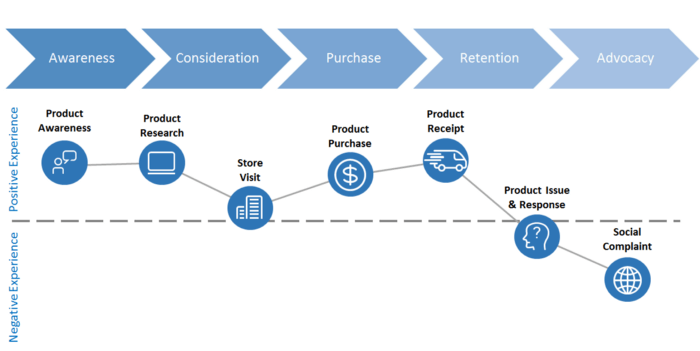
A simplified customer journey map
To create your first customer journey map, you will have to follow a precise checklist that will guide you through the different stages:
- Prepare the ground: define your own touchpoints and buyer personas, these imaginary characters who will follow the path you’ve prepared for them.
- Collect data: using a specialized tool like SatisMeter, gather customer feedback to refine the imaginary journey of the buyer personas you have selected. You can’t just figure everything out by yourself.
- Go the extra mile: understand precisely what reasons bring your customers to this path. Their motivations are as crucial as their emotions and feelings when reaching one of your touchpoints.
- Prepare the future: if you reveal some changes to make, you will also need to be ready for these changes and prepare the necessary resources to close the loop.
Closing the loop of customer feedback? That’s a brilliant idea!
How to Use Customer Feedback to Improve Customer Experience?
From improving your customer service to increasing your retention rate and even attracting more customers by leveraging the power of word-to-mouth marketing, the benefits of customer journey mapping are multiple.
But for that, you will have to close the loop of customer feedback and elaborate a solid Customer Feedback Management (CFM) strategy.
Closing the loop of customer feedback
Launching customer surveys and collecting customer feedback are good things, but you will have done that for nothing if you don’t leverage it. One of the mantras of the modern marketer should be the A.C.A.F., short for Ask, Categorize, Act,, and Follow-up: a marketing strategy focused on customer satisfaction and how to use their feedback to grow your business.
Ask: collect feedback
Customer feedback is nowadays one of the most powerful tools for your business, and a wide topic you need to master from a to z.
We will cover more precisely in another article the best practices for collecting customer feedback across the different channels available, from the classic in-app surveys, website or email surveys to the usage of social media and other alternative sources of precious insights, such as online reviews, live chats, feature requests or customers’ interviews.
But for now, you will have to think carefully about the kind of questions and the type of customer survey you would like to set up. The method you will use depends a lot on your primary goals here, and what you would like to measure:
- Your promoter score, through the NPS survey. Using the NPS will allow you to calculate your Net Promoter Score, a measure of how likely a client is to recommend your service or product to somebody else, on a scale of 1 to 10.
- Your customer satisfaction, using CSAT survey. Customer Satisfaction (or CSat) surveys measure the happiness of your client toward a specific interaction with your brand and are perfectly suitable for open-ended questions.
- The quality of your service and the pain points faced eventually by your users. Even if you can use classic NPS or CSAT surveys, you might want to choose for this purpose a CES survey. CES allows you to calculate your Customer Effort Score, measuring the difficulties encountered by your customers and the efficiency of your resolution processes.
- The quality of your product and the potential improvements you can think about. We will recommend using a combination of CSAT and PMF surveys. Short for Product Market-Fit, the PMF survey measures the uniqueness of your service and gives you also the opportunity to ask your customers about the missing features.
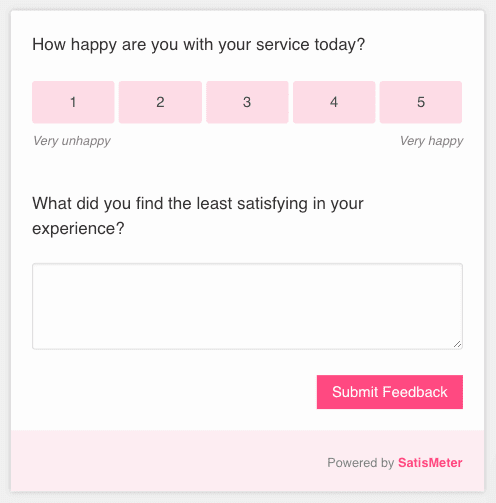
Categorize: organize the feedback
Once you’ve collected your customer feedback, take the time to carefully categorize and classify them between 3 categories :
- Product feedback
- Customer Services feedback
- Marketing and sales feedback
It’s not such a surprise for you that this classification will fit also into your customer journey mapping process. The categorization of the collected data will help you to fill the blank of your map easily.
Act: use the feedback
Since you have carefully categorized your customer feedback, it will be easier for you to compile the data for the accurate team and to attribute the tasks to the people who should be aware of this feedback for doing their job. Your product team and salespeople certainly won’t have the same understanding either the same usage of customer feedback.
Whatever work management tool or software you’re using internally, you should be certain that specific tasks will be created scrupulously for each of the relevant feedback you have received.
Of course, each customer feedback will not automatically lead to a specific action. But even if it’s the case, you should at least acknowledge the fact this customer feedback will, unfortunately, remain unsolved.
Follow-up: let your customers know
Following up internally on tasks created and actions taken is important, and as crucial is the follow-up you should manage with your customers:
- Always let them know that you have received their feedback, and what you plan to do.
- Publish public updates about the situation and what you have done since you’ve received their feedback.
- Inform personally the customer who expressed concern.
By doing so, not only you will close the loop of the customer feedback, but you will also create a great customer experience. Always remember that customer feedback is both a source of data for mapping the customer’s journey, but also an integral part of it.
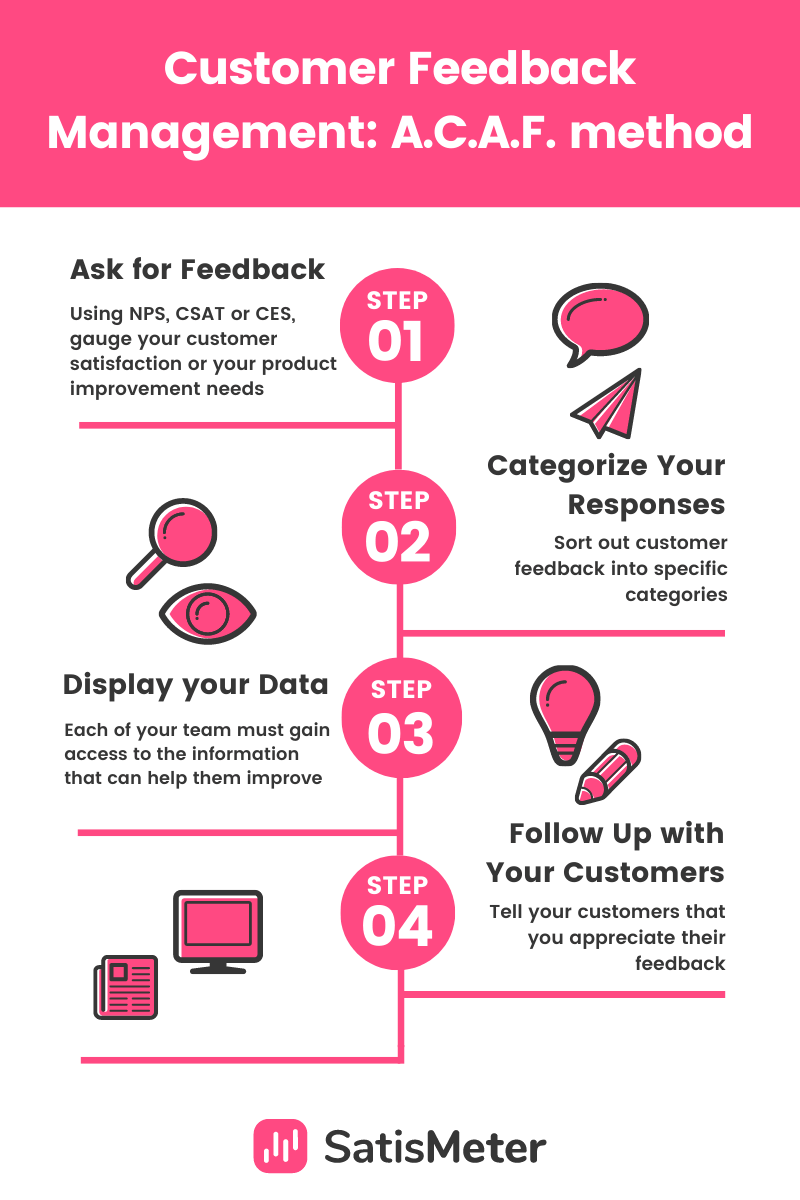
Ask, Categorize, Act, and Follow-up: The ACAF process for customer feedback management
The multiple ways of leveraging your customer feedback to improve your customer experience
Now that you master the methodology of Customer Feedback Management, let’s dive a bit into its practical applications.
What industries benefit the most from customer feedback?
According to HundredX survey, nearly 89 percent of the business executives believe that receiving feedback from customers helps their company solve potential problems, and beyond that, improves their customer experience.
That being said, it is true that some industries need more than others the feedback of their users, for three main reasons:
- Because their product or service is by nature in perpetual evolution and needs external insights to grow in a good direction.
- Because their market is highly competitive and sustains their needs of positioning themselves towards the competition.
- Because their product or service is simply connected to customer satisfaction, and in that case, customer feedback is not only a tool but even a goal.
Among the industries that benefit the most from customer feedback, we can summon for example:
- The hospitality industry, possibly the most affected by customer reviews.
- The E-commerce industry becomes more and more competitive, and the online purchase of a good or service depends a lot on a good customer experience.
- The BtoB industry, where brands need to question themselves all the time to improve their product or services, otherwise they will see their rivals take the lead.
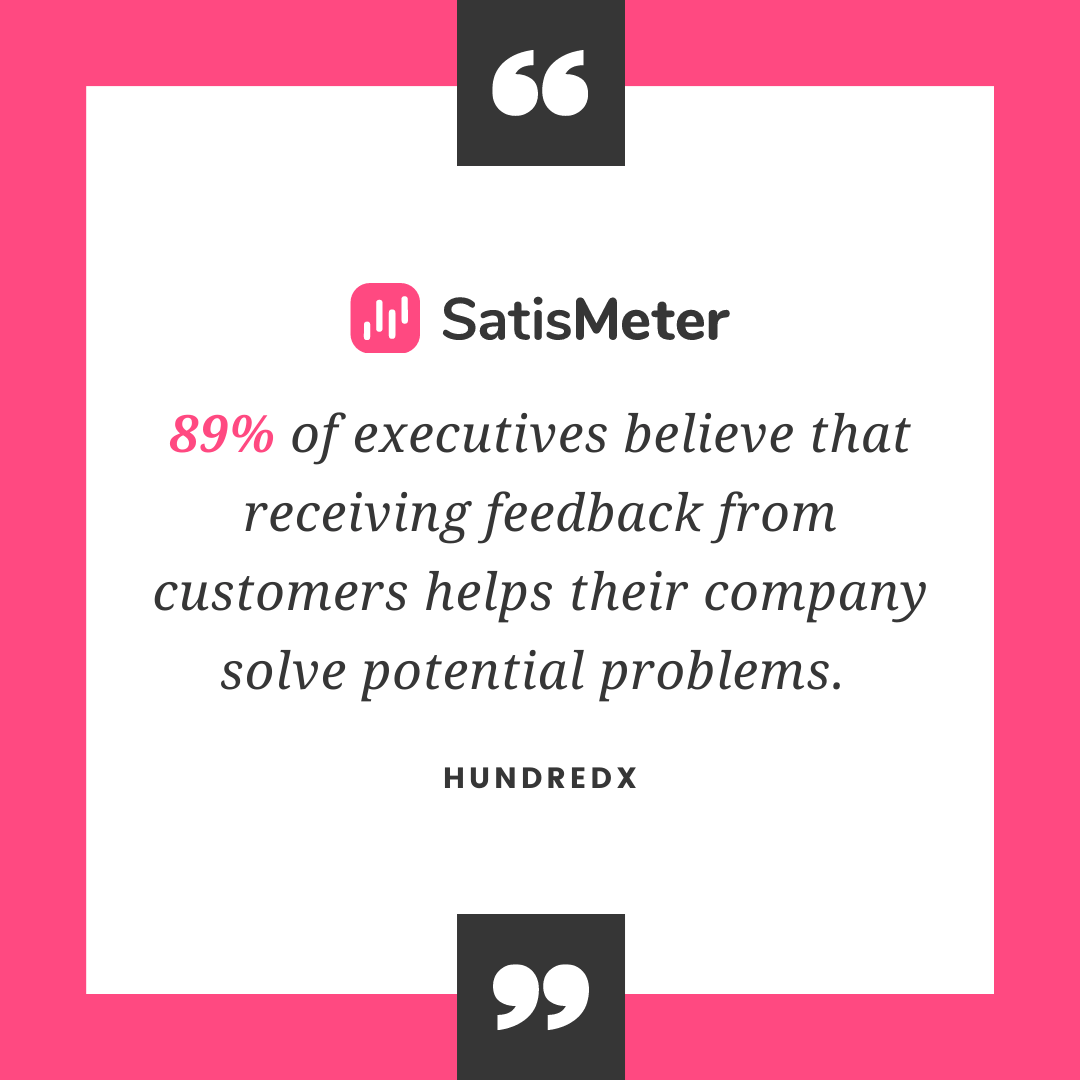
Some examples for leveraging customer feedback
These are just a few examples of industries that benefit from customer feedback, but as you understood it, the practical uses of customer feedback are almost infinite. Among the most classical examples of leveraging feedback for customer experience improvement are:
- Improving your product based on customer feedback: never forget your customers are even more using your product or service than your product manager. They see everything, the good and the bad, the small bugs and the big opportunities. Not listening to them and only trusting your own judgment will be a crime. Adding new features, fixing a product issue, or giving a new direction to your product will be easier if you know that these actions will be greatly welcomed.
- Upgrading the quality of your customer support: if people are often confusing customer experience and customer service, it’s mainly because these two notions are closely related. From employee training to the selection of the right tools or the creation of a knowledge base, there is always a huge room for improvement of your CS.
- Using customer feedback for your marketing: more than any other department, your marketing team is acting on several stages of your customer journey, from awareness and consideration to advocacy. They will leverage customer feedback to very diverse actions such as rebranding, improved emailing campaigns, a new blog strategy, or the launch of your referral program.
- Enhancing the purchase experience: e-commerce owners know it very well, CX is crucial in their market. What is more difficult is to know what to change to gain quite instantaneously new customers for your business, but that’s exactly why customer feedback and customer journey mapping have been created for. A new landing page, an enhanced UX for your catalog, a more accurate pricing system, or a speedy delivery process, your existing customers know what you need the most right now.
Here at SatisMeter, our users are coming from very various industries, and each one is leveraging successfully the customer feedback in their own way to improve their customers’ experience.
Sign up now
